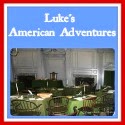Fought on September 17, 1862, the Battle of Antietam (or Sharpsburg by the Confederacy), was the first major battle in the American Civil War to take place on Union soil. It is the bloodiest single-day battle in American history, with a combined tally of dead, wounded, and missing reaching over 22,000.
Why would the bloodiest battle be recorded in history as both Battle of Antietam and as the Battle of Sharpsburg? The name of a Civil War battle is dependent on which side you’re on. Northern soldiers, far more likely to hail from cities or urbanized areas, were believed to have been impressed with the geography of the south, including its mountains, valleys and abundant rivers and streams. In unfamiliar territory, they named many of their battles after these natural landmarks. For Confederate troops, familiar with the rural terrain, towns and buildings were more memorable, so in the south many of the same battles were referred to after the towns nearby. Union soldiers named the battle “Antietam” because of the nearby Antietam Creek, while the town of Sharpsburg, Maryland was the more easily identified landmark for Confederate soldiers.
 |
| The path between Clara Barton and the Cornfield |
Why would Lee risk marching his army through Maryland, which was still a Union state? Based on events such as the Baltimore riots in the spring of 1861, and the fact that President Lincoln had to pass through the city in disguise en route to his inauguration, Confederate leaders assumed that Maryland would welcome the Confederate forces. The Confederate army sang the tune "Maryland, My Maryland!" as they marched, but by the fall of 1862 pro-Union sentiment was winning out, especially in the western parts of the state. Lee was wrong about Maryland joining the Confederate cause. Civilians generally hid inside their houses as Lee's army passed through their towns, or greeted the Confederate army with cold silence, while the Army of the Potomac was cheered and encouraged as it came through the state.
While Lee was marching the Army of Northern Virginia north, Union General George B. McClellan's 75,500-man Army of the Potomac was moving to intercept Lee. Unfortunately for Lee, two Union soldiers, Corporal Barton W. Mitchell and First Sergeant John M. Bloss of the 27th Indiana Volunteer Infantry, discovered a mislaid copy of Lee's detailed battle plans—Special Order 191—wrapped around three left-behind cigars. The order indicated that Lee had divided his army and dispersed portions geographically (to Harpers Ferry, West Virginia, and Hagerstown, Maryland), thus making each subject to isolation and defeat if McClellan could move quickly enough. Fortunately for Lee, the notoriously indecisive McClellan waited about 18 hours before deciding to take advantage of this intelligence, thus squandering an opportunity to defeat Lee decisively.
 |
| Dunker Church Confederate Headquarters |
McClellan’s plan was, in his words, to “attack the enemy’s left,” and when “matters looked favorably,” attack the Confederate right, and “whenever either of those flank movements should be successful to advance our center.” Over the first seven hours there were three major Union attacks on the Confederate left, but then McClellan’s plan broke down into a series of uncoordinated Union advances. Savage, incomparable combat raged across the Cornfield, East Woods, West Woods and the Sunken Road as Lee shifted his men to withstand each of the Union attacks. After eight hours, the Confederates were held in check and dealt over 15,000 deaths and casualties, but Lee refused to retreat.
 |
| Sunken Road ("Bloody Lane") |
Neither flank of the Confederate army collapsed far enough for McClellan to advance his center attack, leaving a sizable Union force that never entered the battle. Despite a combined 22,217 deaths and casualties - nearly four times the number of casualties that would later occur on D-Day in World War II, both armies stubbornly held their ground as the sun set on the blood-soaked landscape.
 |
| Upturned Cannon where a CSA General was killed |

©2012- 2014 Adventures with Jude. All rights reserved. All text, photographs, artwork, and other content may not be reproduced or transmitted in any form without the written consent of the author. http://adventureswithjude.com



I love historic sites and you did a great job of sharing the history of this site. Great job with the letter A. I had to just post an A and B combo to get on track.
ReplyDeleteThis was a great lesson on this battle, thanks for sharing! We are just about to the Civil war so I will come back to this post for reference. I missed the link for A, but left my link in the comments section of the host post.
ReplyDeleteI am an American man, and I have decided to boycott American women. In a nutshell, American women are the most likely to cheat on you, to divorce you, to get fat, to steal half of your money in the divorce courts, don’t know how to cook or clean, don’t want to have children, etc. Therefore, what intelligent man would want to get involved with American women?
ReplyDeleteAmerican women are generally immature, selfish, extremely arrogant and self-centered, mentally unstable, irresponsible, and highly unchaste. The behavior of most American women is utterly disgusting, to say the least.
This blog is my attempt to explain why I feel American women are inferior to foreign women (non-American women), and why American men should boycott American women, and date/marry only foreign (non-American) women.
BOYCOTT AMERICAN WOMEN!
www.boycottamericanwomen.com
/. /. ./. /.